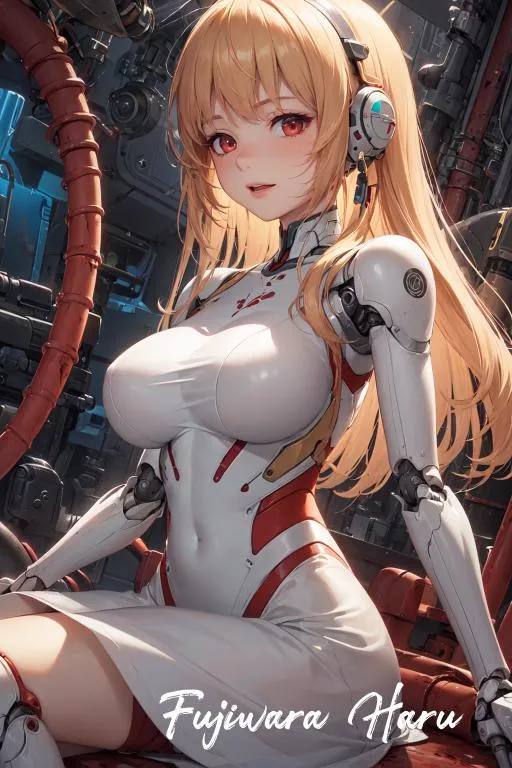It’s safe to say that at the end of its eight-episode first season, Amazon and the Westworld team of Jonathan Nolan and Lisa Joy have seemingly pulled off the impossible and successfully adapted Fallout for television.
While Amazon’s TV treatment doesn’t directly adapt any of the video game storylines, there are connective tissues throughout the show that call back to various games in the series, all culminating in a season finale which sets up a tantalizing new adventure to one of Fallout’s most beloved settings.
Spoilers for major plot points in the Fallout TV Series.
The Secret of Vault 33
Fallout begins 219 years after the nuclear war of 2077 decimates the United States and forces select citizens to enter nuclear war-protection shelters known as Vaults. Initially, it was set up to make viewers think that the story was a spiritual adaptation of Fallout 3 where our protagonist, Lucy MacLean (Ella Purnell), is forced to venture outside into the Wasteland and rescue her father, Overseer Hank MacLean (Kyle MacLachlan).
Fans of the Fallout games know that each Vault set up by Vault-Tec wasn’t just a shelter from nuclear war, but also a testing site where the corporation could run various experiments on its residents. It’s initially suggested that the MacLean’s Vault 33 was designed to simulate a “perfect meritocracy.”
This is in fact not the case at all. In reality, Vault 33 is part of a trio of inter-connected Vaults alongside Vault 32 and Vault 31, the latter of which actually houses loyal Vault-Tec employees from the year 2077 who were cryogenically frozen. This was done intentionally by Vault-Tec to ensure that its most loyal and successful employees could be awoken in the future to take charge of what’s left of the United States after the war ends and when radiation levels on the surface subside enough for them to rise up and take command of the wasteland.
Vault 32 and Vault 33 were designed as “breeding pools”, with highly desirable genetic subjects for Vault-Tec employees in Vault 31 to mate with and produce successful, Vault-Tec-aligned offspring, including Lucy and her brother. This test would’ve continued to run unbeknownst to the inhabitants of Vault 33 if it weren’t for a raider leader named Moldaver (Sarita Choudhury) – later revealed to be the head of the scrappy remains of the New California Republic – who invades the Vaults and kidnaps Hank.
It’s a Faction vs. Faction World
True to Fallout, various factions exist within the Wasteland and the show creates a mcguffin that pits these vying parties together. Along with the aforementioned Vault-Dwellers and Moldaver’s NCR raiders, the show spends a lot of time focusing on the Brotherhood of Steel as well as the other inhabitants of the Wasteland.
It all begins when Siggi Wilzig (Michael Emerson), a scientist of the Enclave, escapes the compound with a mysterious blue pill injected into his neck. This pill, it turns out, is a cold fusion reactor designed to produce unlimited energy. It was originally developed in the year 2077 by Moldaver before Vault-Tec acquired the technology, only to shelve it as it threatened bringing peace to a world fighting over finite resources. And as we know, peace is bad for Vault-Tec’s business. The reactor kicks off a race between Lucy, the Brotherhood of Steel, and a bounty hunter Ghoul named Cooper Howard (Walton Goggins) to acquire the reactor for their own personal reasons.
The Brotherhood’s motives for acquiring the cold fusion reactor aren’t wholly clear other than they believe that with its unlimited power the Brotherhood will be able to conquer the Wasteland for themselves, and they send an ambitious squire named Maximus (Aaron Clifton Moten) to help the Knight Titus (Michael Rappaport) acquire the reactor.
While Lucy only wants the cold fusion reactor to use it as a bartering chip to free her dad from Moldaver’s raiders, Cooper initially sets out to collect the bounty on Wilzig’s head before finding out this bounty mission is tied to his own past.
A Showdown With Vault-Tec
Just as in the Fallout video games, Lucy starts off as a doe-eyed vault-dweller only to learn over her arduous journey that Vault-Tec is in fact not the altruistic corporation its image purported it to be. Instead, it’s revealed from various flashbacks to Cooper’s life in 2077 (where he is a famous Hollywood actor) that when Vault-Tec’s fortunes were threatened with a potential peace treaty that would make its hundreds of nuclear fallout shelters obsolete, Vault-Tec went ahead and launched its own nuclear weapons, thereby kickstarting the war themselves. They did so to ensure the company’s marquee product, the vaults, wouldn’t end up being defunct, unused relics.
It’s in these flashbacks that we get a glimpse of Vault-Tec’s true, sinister nature. Not only does Cooper’s wife and Vault-Tec executive, Barb Howard, reveal the company’s plans to drop nuclear bombs on America itself, but Vault-Tec makes a secret pact with America’s other successful companies like Westec to give them free reign of various Vaults throughout America for them to run their own twisted experiments. According to Vault-Tec, this would allow the companies to determine which one of them was best positioned to lead the post-war United States. In other words, a capitalist fight over the future.
However, what Vault-Tec and the other corporations didn’t take into account was the human tenacity for survival. While Vaults were reserved mostly for the wealthy, those who were unable to afford a place in the Vaults didn’t all just die off in the Wasteland once the bombs landed. At some point, 200 or so years after the first nuclear weapons were dropped on America, societies like the New California Republic rose up from the ashes with vibrant cities like Shady Sands as its capital.
While it's still a mystery how Moldaver survived for so long, it’s implied that she established Shady Sands which briefly served as a technologically advanced safe haven in the Wasteland. At some point, Lucy’s mother took her two children and briefly escaped Vault 33 and ended up staying in Shady Sands, at least until her husband found them.
As previously mentioned, Lucy’s father Hank is a dyed-in-the-wool Vault-Tec employee, meaning any threat to Vault-Tec’s supremacy needs to be squashed, including the New California Republic. In the final episode, Moldaver reveals that after Hank took the children back into the Vault, he not only dropped a nuclear bomb on Shady Sands, but did so knowing his wife was still there, turning her into a Ghoul.
What Happens in New Vegas
As the Brotherhood of Steel and Cooper arrive at Moldaver’s new base of operations where she is holding Hank hostage, Lucy learns the truth about her Vault and Hank, driving a wedge between father and daughter. As a fight between Moldaver’s forces, the Brotherhood, and Cooper breaks out, Lucy finds it hard to forgive her father. But that doesn’t matter in the end as Maximus — whom Lucy develops a romantic relationship with over the course of the series — ends up freeing Hank before Lucy could decide whether to even rescue him.
Hank proceeds to steal a Power Armor and attempts to leave Moldaver’s compound with Lucy before getting interrupted by Cooper who, remember, is also from the year 2077 just like Hank. More than that, Hank was a personal assistant to Cooper’s wife at Vault-Tec, having even picked up Barbara’s laundry on several occasions. Without support from her daughter and unable to return to Vault 33 — which has been taken over by another unfrozen Vault-Tec employee — Hank flees to presumably a safe haven for Vault-Tec employees, which is none other than New Vegas.
The glowing familiar sign of the Wasteland’s sinful capital is the final shot of the Fallout series, teasing a new adventure in the New Vegas strip for season 2.
Is There Any Connection to the Games?
It was revealed that Todd Howard specifically requested Amazon’s Fallout creative team avoid any storylines that could potentially be used for Fallout 5. But that doesn’t mean the writers completely avoided dipping into Bethesda’s games at all.
While Amazon’s TV show tells an original story set in the Fallout universe there are threads that connect the show to the games. The cryogenic plot device, for example, is something the show borrowed from Fallout 4, where the game’s protagonist and other residents of Vault 111 were cryogenically frozen as part of the experiment run on the vault’s citizens.
Lucy’s journey begins with her setting off to find her kidnapped father, which echoes the start of Fallout 3. Meanwhile, the show sets up a second season set in New Vegas, which is of course the setting to one of the most beloved games in the series.
And those are just the big picture connections. The Fallout TV series does an amazing job weaving in references, big and small, throughout the first season which eagle-eyed viewers, as well us at IGN, have found littered around the Wasteland. The writing also functions on a meta level with Cooper at one point complaining about how the Wasteland somehow finds a way to send its inhabitants on time-consuming side adventures, just like how Fallout’s open world is filled with optional quests players can partake in.
Ultimately, the Fallout TV series once again raises the bar for video game adaptations following the successful Last of Us adaptation. And we can’t wait to see what’s in store next for season two.
Matt T.M. Kim is IGN's Senior Features Editor. You can reach him @lawoftd.




